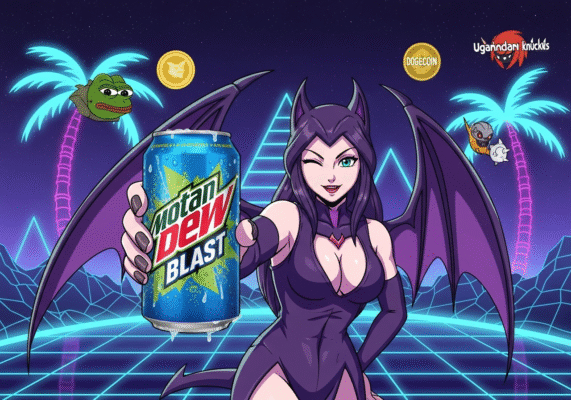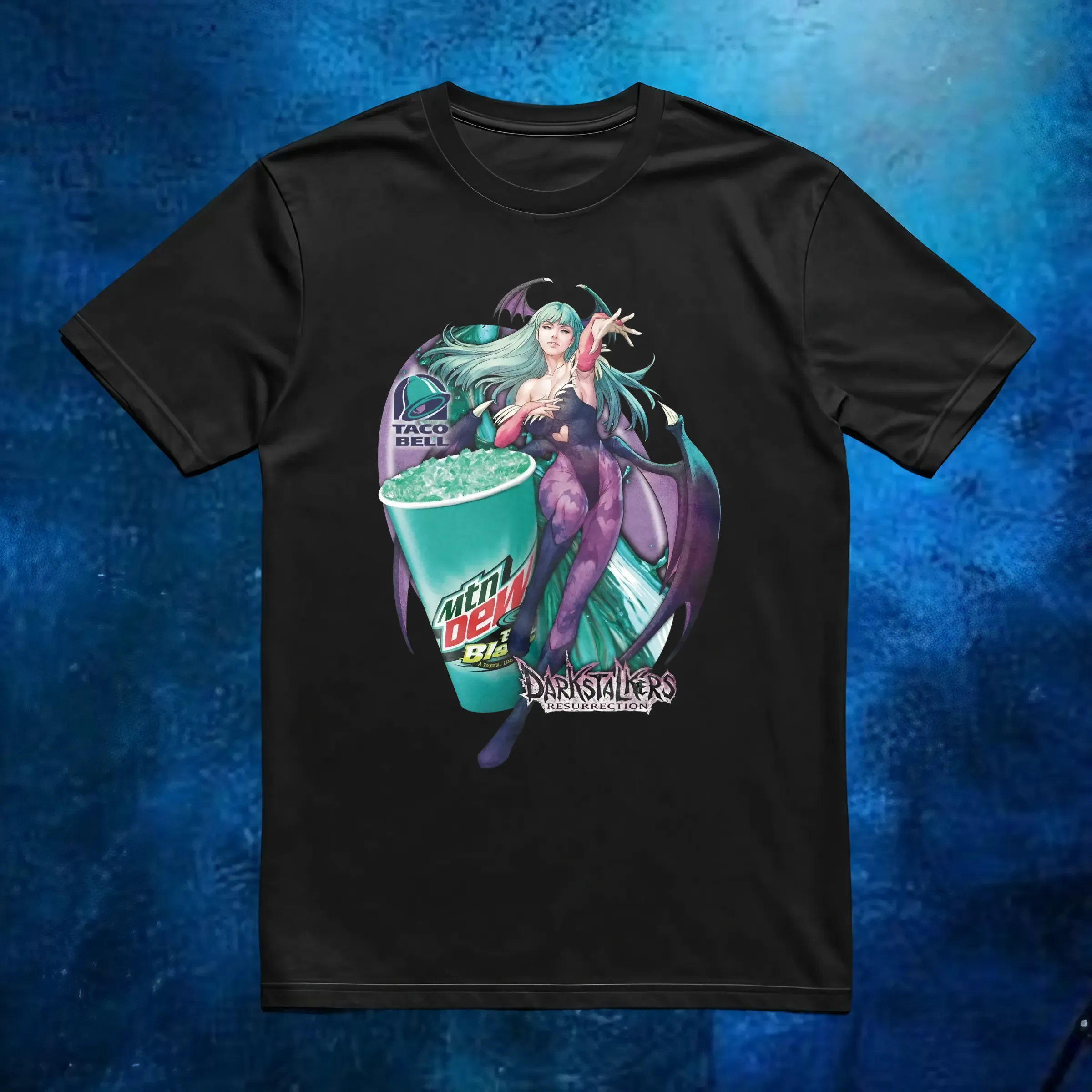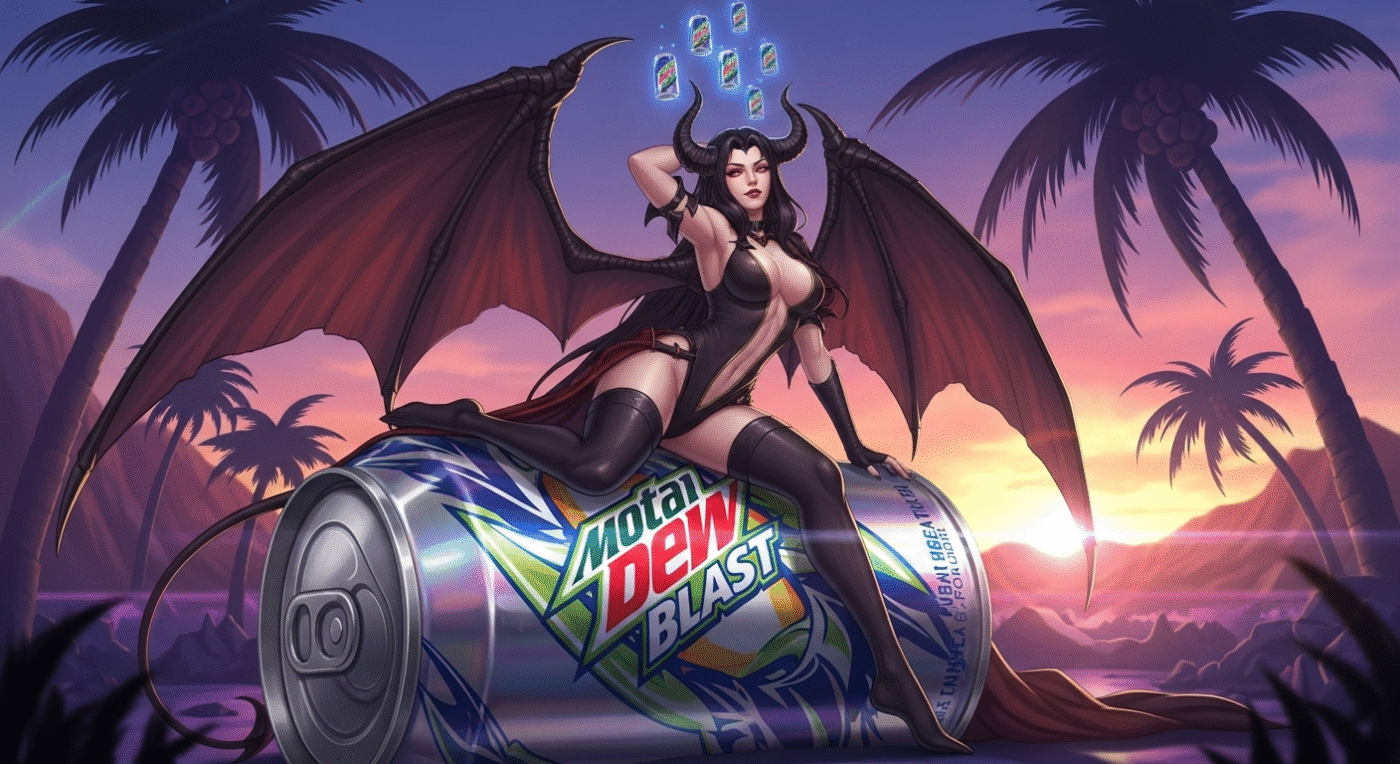Uncategorized
The Unlikely Duo: How Morrigan Aensland and Mountain Dew Baja Blast Became an Internet Obsession
In the vast and often surreal landscape of internet culture, unexpected connections are forged in the crucible of memes, fan art, and shared aesthetics. One such pairing that has captivated a niche but fervent audience is the association between Morrigan Aensland, the iconic succubus from Capcom’s Darkstalkers video game series, and Mountain Dew Baja Blast, the beloved tropical lime-flavored soda. While on the surface, a seductive demon warrior and a carbonated beverage might seem to have little in common, a deeper dive reveals a fascinating intersection of color theory, brand loyalty, and the creative power of fandom.
The Alluring Darkness: Who is Morrigan Aensland?
First introduced to the world in the 1994 arcade game Darkstalkers: The Night Warriors, Morrigan Aensland is a powerful succubus and the adopted daughter of Belial, the ruler of the demon realm of Makai.[1][2] Designed to be a departure from traditional fighting game characters, Morrigan’s appeal lies not just in her formidable combat abilities but in her alluring and confident personality.[1] Her design is a masterclass in character creation, featuring a striking color palette of dark purples, blacks, and, most notably, a vibrant teal hair that cascades around her.[3][4] This specific shade of teal has become synonymous with the character, a visual shorthand for her otherworldly charm and power.

Morrigan quickly became a fan favorite and a flagship character for the Darkstalkers series, appearing in numerous crossover titles, including the popular Marvel vs. Capcom series.[5] Her complex backstory, which involves her soul being split into three parts to contain her immense power, adds a layer of depth to her otherwise carefree and thrill-seeking demeanor.[1] It is this combination of a captivating design, intriguing lore, and engaging gameplay that has cemented Morrigan’s status as an enduring icon in the world of fighting games.
The Cult of the Blue-Green Nectar: The Rise of Baja Blast
On the other side of this unlikely pairing is Mountain Dew Baja Blast, a beverage with a surprisingly storied history. Originally launched in 2004 as a Taco Bell exclusive, Baja Blast was a strategic collaboration between Yum! Brands and PepsiCo.[6][7][8] The tropical lime flavor was specifically formulated to complement Taco Bell’s menu, and its distinctive teal color made it stand out amongst the usual fountain drink offerings.[7] For years, this exclusivity was a key part of its allure; you had to make a pilgrimage to Taco Bell to experience its unique taste.[7][9]

This limited availability fostered a dedicated and almost cult-like following. Fans would go to great lengths to get their fix, with some even attempting to create bootleg versions at home.[9] The demand became so high that in 2014, to celebrate its 10th anniversary, Mountain Dew released Baja Blast in bottles and cans for a limited time.[7][10] This move was met with widespread excitement and has since become a recurring summer event, with each retail release generating significant buzz and social media engagement.[7] The brand has even expanded to include different flavors and even a hard seltzer version.[6] Baja Blast has transcended its origins as a fast-food soda to become a cultural phenomenon, a symbol of summer, and the subject of countless memes.[11][12][13]
A Match Made in Fandom: The Visual and Thematic Connection
So, how did a succubus from a 90s fighting game and a Taco Bell-exclusive soda become intertwined? The primary and most obvious link is their shared and distinctive color palette. Morrigan’s vibrant teal hair is a near-perfect match for the eye-catching hue of Mountain Dew Baja Blast. This visual synergy is the bedrock of the connection, a simple yet powerful aesthetic link that the internet was quick to notice.
This shared color has sparked a wave of fan-created content, from custom T-shirts and merchandise to memes and fan art that playfully combines the two.[14][15] These creations often depict Morrigan enjoying a can of Baja Blast or feature the soda’s logo integrated into her classic design. This fan-driven crossover is a testament to the power of visual branding and the creative ways in which audiences can reinterpret and remix cultural touchstones.
Beyond the color, there’s a subtle thematic resonance that makes the pairing feel strangely appropriate. Both Morrigan and Baja Blast represent a certain kind of “edgy” or alternative appeal. Morrigan, with her demonic heritage and seductive nature, embodies a departure from the traditional video game heroine.[1] Similarly, Baja Blast, with its bold flavor and association with a fast-food chain known for its late-night “fourth meal” crowd, has always been positioned as a more adventurous choice than a standard cola. Both have an air of the “cool” and the “in-the-know,” a secret shared by their respective fandoms.
The Power of Unofficial Crossovers
The Morrigan Aensland and Mountain Dew Baja Blast phenomenon is a prime example of a larger trend in internet culture: the rise of the unofficial crossover. In an age where intellectual property is fiercely guarded by corporations, fans are increasingly creating their own narratives and connections between their favorite characters and brands. These unofficial pairings are a form of cultural remixing, a way for audiences to participate in the media they consume and to create new and often humorous meanings.
This particular crossover highlights the way in which a strong visual identity can transcend its original context. For fans, the teal of Baja Blast is no longer just a color; it’s a flavor, a feeling, and now, it’s also Morrigan Aensland. This association, born from a simple color match, has given both the character and the product a new layer of cultural relevance in a corner of the internet.
While there will likely never be an official collaboration between Capcom and PepsiCo to bring this fan-fueled dream to life, the enduring appeal of the Morrigan-Baja Blast connection demonstrates the power of a dedicated fanbase and the unexpected ways in which popular culture can intersect and create something new and delightfully strange. It’s a testament to the fact that in the world of the internet, sometimes the most unlikely pairings are the ones that make the most sense.


